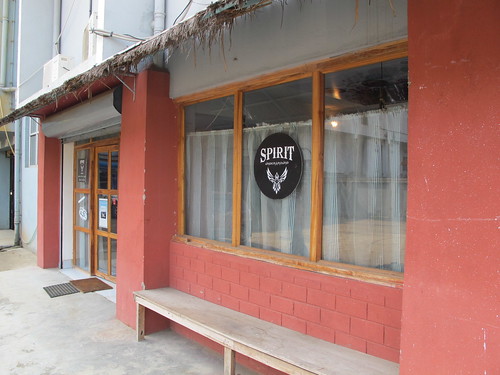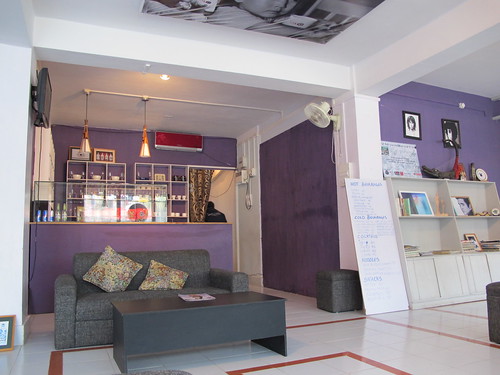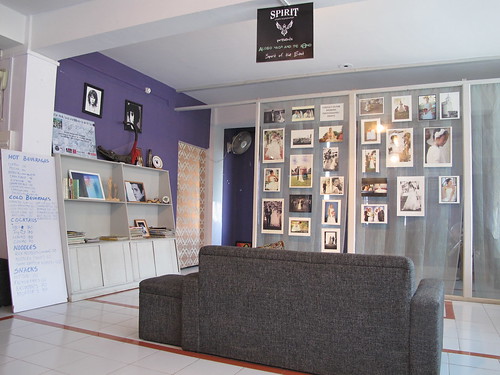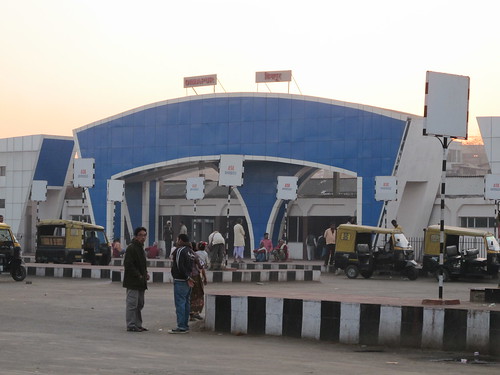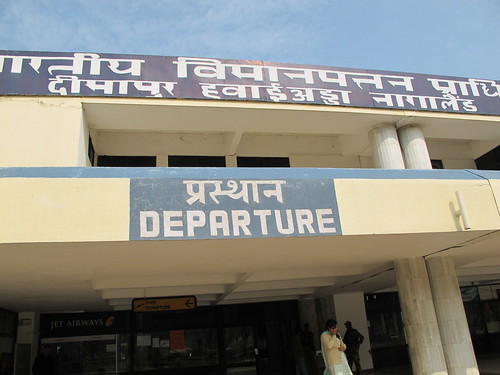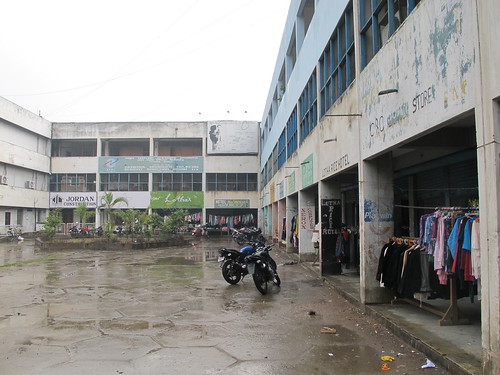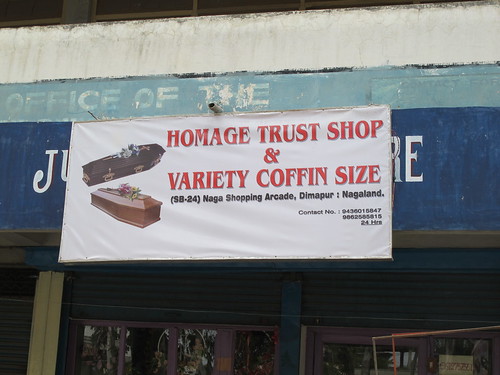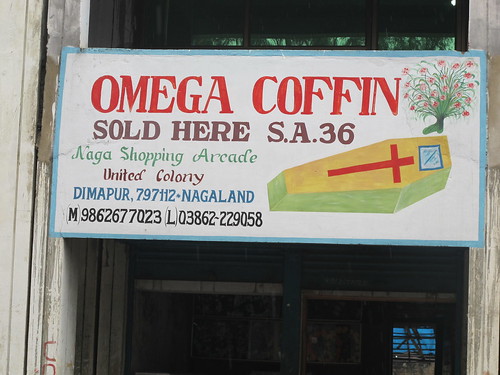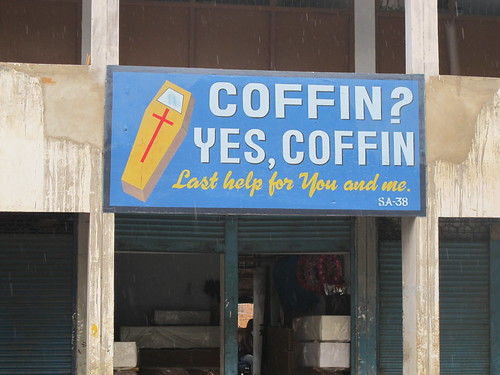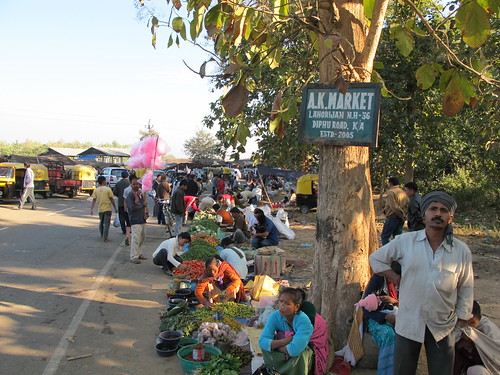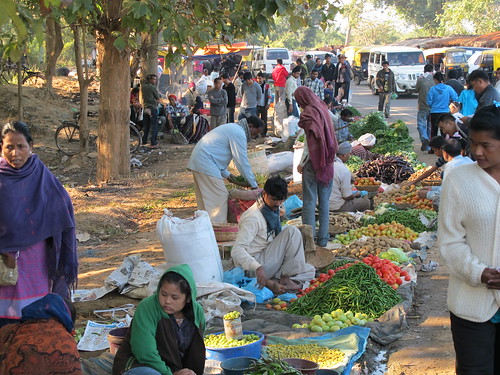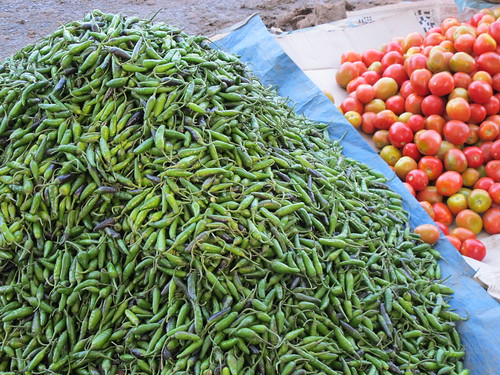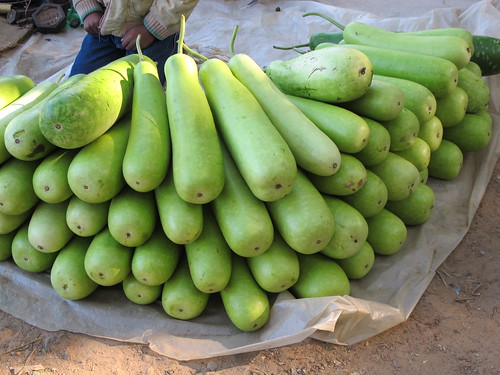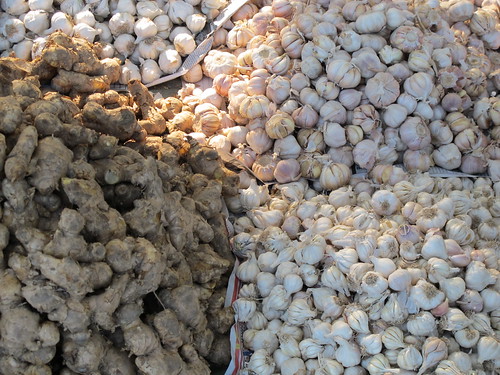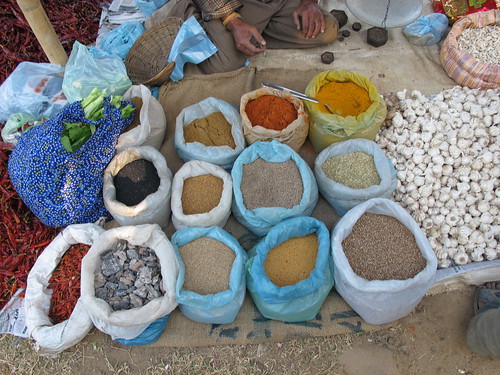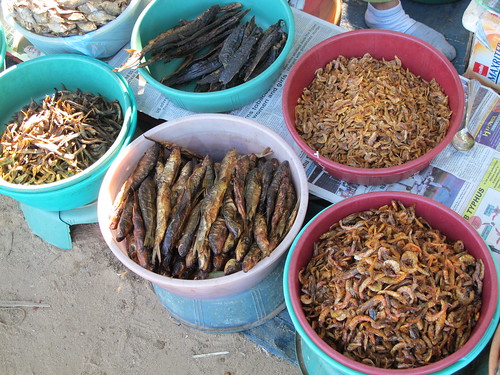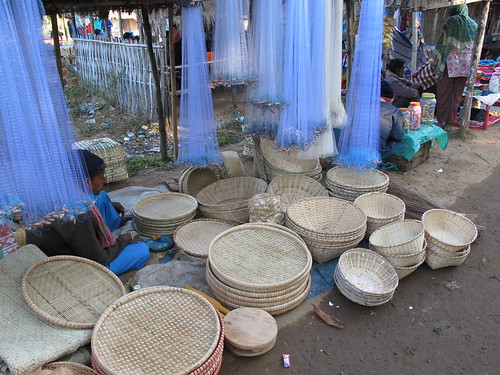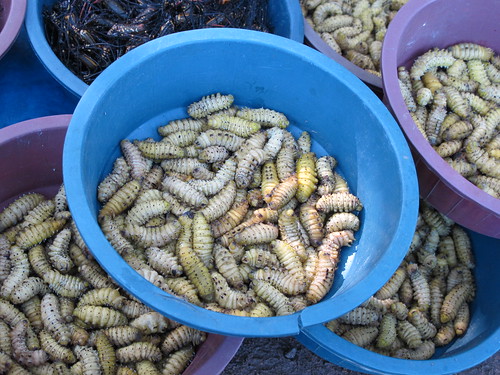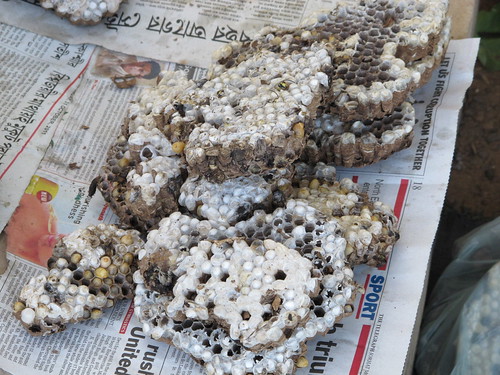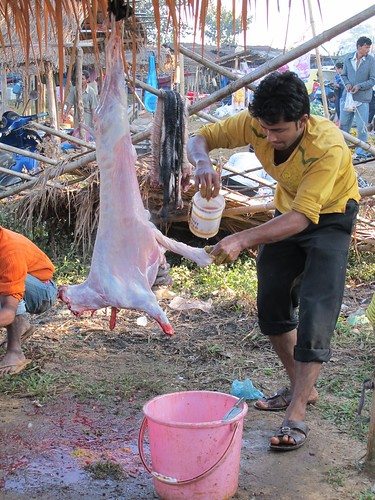While Assam is considering banning bandhs for the rest of the month, following violence during Tuesday's bandh (including some incidents here in Guwahati), Nagaland hasn't quite reached that stage yet. I arrived on Saturday in Dimapur to what was called a 'lightning bandh', a term I had never heard before. Note that is also spelled 'lightening bandh', although this is certainly a common misspelling of 'lightning', as there is nothing about this sort of bandh that 'lightens' / is 'lightening'.
The term was used in relation a bandh that was called on Saturday in Dimapur. You can see it reported here in the Nagaland Post: Aug 31 incident sparks inter-tribal clash in Dimapur and also in the Eastern Mirror: Clashes erupt in Dimapur. From what I gather, the term refers to a bandh that's called very suddenly and often violently, since business owners aren't given enough notice, bandh supporters go to them and forcefully make them shut their doors.
As you can read in the articles, on Friday 31 Aug, a Sumi man, Kivika Assümi, was arrested by a Kohima Village Youth Organisation 'Quick Response Team' (which as far as I can tell acted as a kind of local vigilante group). Kivika was accused of bike theft, and died while in this group's custody. Whether he was guilty or not of the crimes he was accused for, his death was clearly not acceptable. A Sumi student organisation in Dimapur called for a bandh to protest his death. This eventually led to some terrible acts of violence between groups of Sumi and Angamis, and eventually the complete shut down of a section of NH 29, the highway that runs from Dimapur to Kohima.
The part of town where I was staying (close to Supermarket) wasn't really affected, and when I came out of the train station in Dimapur, I also hadn't really noticed anything unusual, apart from the lack of pre-paid taxis going to Kohima. Unfortunately, I had a few Sumi friends trying to come into Dimapur that afternoon, and they were forced to spend the night at a church in a village off the main highway. Thankfully, they did make it into Dimapur safely on Sunday.
It doesn't take much to realise that the term 'lightning' is quite appropriate for this sort of situation. A flash of lightning is enough to set off a wild fire, if there's been enough fuel around. And sadly, there is a lot of 'fuel' building up all over this part of the world, whether it's tension between rival tribes or between migrants and long-established communities.
The term was used in relation a bandh that was called on Saturday in Dimapur. You can see it reported here in the Nagaland Post: Aug 31 incident sparks inter-tribal clash in Dimapur and also in the Eastern Mirror: Clashes erupt in Dimapur. From what I gather, the term refers to a bandh that's called very suddenly and often violently, since business owners aren't given enough notice, bandh supporters go to them and forcefully make them shut their doors.
As you can read in the articles, on Friday 31 Aug, a Sumi man, Kivika Assümi, was arrested by a Kohima Village Youth Organisation 'Quick Response Team' (which as far as I can tell acted as a kind of local vigilante group). Kivika was accused of bike theft, and died while in this group's custody. Whether he was guilty or not of the crimes he was accused for, his death was clearly not acceptable. A Sumi student organisation in Dimapur called for a bandh to protest his death. This eventually led to some terrible acts of violence between groups of Sumi and Angamis, and eventually the complete shut down of a section of NH 29, the highway that runs from Dimapur to Kohima.
The part of town where I was staying (close to Supermarket) wasn't really affected, and when I came out of the train station in Dimapur, I also hadn't really noticed anything unusual, apart from the lack of pre-paid taxis going to Kohima. Unfortunately, I had a few Sumi friends trying to come into Dimapur that afternoon, and they were forced to spend the night at a church in a village off the main highway. Thankfully, they did make it into Dimapur safely on Sunday.
It doesn't take much to realise that the term 'lightning' is quite appropriate for this sort of situation. A flash of lightning is enough to set off a wild fire, if there's been enough fuel around. And sadly, there is a lot of 'fuel' building up all over this part of the world, whether it's tension between rival tribes or between migrants and long-established communities.

